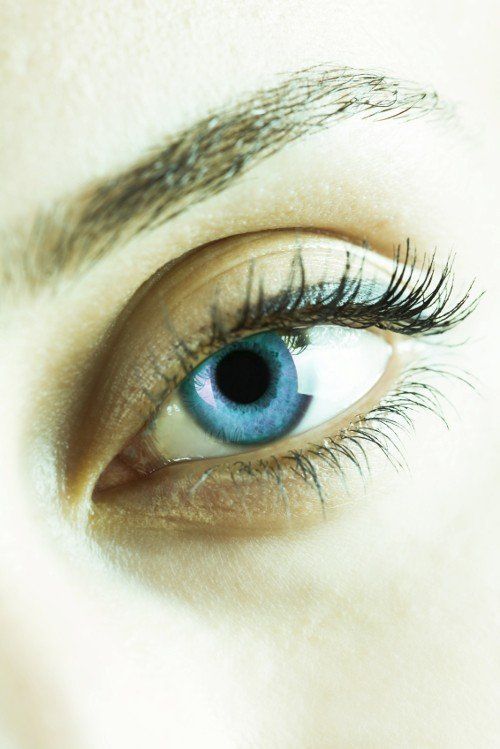Bilberry Extract May Offer Benefits for Dry Eyes
The study found that bilberry extract, in the form of Indena S.p.A.’s Mirtoselect, is naturally bioavailable and may play a key role in improving tear secretion and plasmatic antioxidant potential in subjects suffering from dry eye.
Photo © iStockphoto.com/kutaytanir

A new study,1 published in the European Review for Medical and Pharmacological Sciences, found that bilberry extract may provide some relief for dry eye symptoms. In this study, researchers sought to establish bilberry extract’s bioavailability and ability to reduce eye discomfort; the secondary aim of the study was to further confirm bilberry extract’s antioxidant properties. The study found that bilberry extract, in the form of Indena S.p.A.’s (Milan) Mirtoselect, is naturally bioavailable and may play a key role in improving tear secretion and plasmatic antioxidant potential in subjects suffering from dry eye.
Citing a definition proposed at the International Dry Eye Workshop in 2007, the study authors define dry eye as “a multifactorial disease of the tears and oracular surface that results in symptoms of discomfort, visual disturbance, and tear film instability.” These symptoms can eventually lead to damage of the ocular surface, which is concerning, considering that roughly five million Americans aged 50 and above report suffering from this condition. Dry eye symptoms impair visual function and can affect daily life and work productivity.
Bilberry extract (Vaccinium myrtillus) is a species of edible, blue fruit related to the American blueberry. The authors write that, while there are conventional methods of managing eye discomfort, bilberry extract has been shown to be an effective, alternative contributor to eye health. Previous studies have indicated that bilberry extract, either taken alone or in combination with other ingredients, may help improve symptoms of computer eye strain, but the researchers point out that there is currently no clear evaluation on bilberry’s ability to alleviate dry eye symptoms.
In the current study, an in vivo pharmacokinetic animal study was first conducted to determine which of two oral formulations of bilberry extract was most bioavailable. The first was a standardized bilberry extract (Mirtoselect, which contains 36% anthocyanins); the second, a highly purified anthocyanin-rich extract, “devoid of the non-anthocyanin component and supported on maltodextrins.” Ten total rats were randomly assigned to one of the two bilberry doses. Researchers then collected blood samples from the rats at 5, 10, 15, 20, 30, 45, 60, 90, and 120 minutes post-treatment. After analyzing the blood samples, the researchers concluded that the bilberry standardized extract as Mirtoselect was more bioavailable.
Next, in a randomized, double-blind, placebo-controlled, parallel group comparison study, 22 healthy adults suffering from visual fatigue or eye strain were given a daily dose of two tablets comprising either 80 mg Mirtoselect and 170 mg of standard excipients, or a placebo comprising excipients only. The study period was four weeks. During those four weeks, subjects were instructed to play video games for 45 minutes prior to ophthalmological examinations, which were conducted at inclusion and again after the four-week period. Using Schirmer’s test, the researchers evaluated the subjects’ volumes of tear secretion. This was carried out using ColoBar strips, which were placed under the subjects’ eyelids and left for five minutes under spontaneous blinking. Researchers also measured pupil constriction, using the TriIRIS C9000; the amount of change was considered an indicator of eye strain. Finally, the study authors analyzed oxidative stress and antioxidant potential of the bilberry extract using a diacron-reactive oxygen metabolites test and a biological antioxidant potential test, respectively.
After analyzing the above parameters, the researchers found that the group supplemented with bilberry extract exhibited significant improvements with regard to tear secretion, whereas no discernible change was detected in the placebo group. The study authors write that a subset analysis indicated that Mirtoselect would likely be more effective in subjects with higher tendency of dry eye.
Regarding bilberry extract’s antioxidant properties, the researchers observed significant improvement of biological antioxidant potential, as well as increased ratio of modified biological antioxidant properties to diacron-reactive oxygen metabolites, indicating an “overall balance between antioxidant potential and oxidative stress.” Thus, they concluded, bilberry extract is a natural and bioavailable means of improving symptoms of dry eye-particularly tear secretion.
Antonella Riva, product research manager, Indena, commented on the study’s significance in a press release: “Aged people or those exposed to certain stress conditions for the eye (i.e. dust or dry environment) may experience discomfort, visual disturbance, and tear film instability with potential impairment of the ocular surface,” she said. “Mirtoselect is supported by a strong clinical literature, confirming its efficacy profile in the realm of vascular health and ophthalmology. This last study opens a new application for our bilberry extract in subjects with visual fatigue and a higher tendency of dry eye. The observed antioxidant potential is of a great importance due to the fact that a potential relationship between dry eye and relative oxygen species is reported."
References:
- Riva A et al., “The effect of a natural, standardized bilberry extract (Mirtoselect) in dry eye: a randomized, double blinded, placebo-controlled trial.” European Review for Medical and Pharmacological Sciences, vol. 21, no. 10 (2017) 2518-2525
Kratom sees impressive sales growth despite its regulatory status and stigma
March 12th 2025Despite its controversy, kratom is a top-selling ingredient that consumers see value in. That said, brands need to work hard to demonstrate safety and quality of kratom products in the absence of legal regulatory status. Will kratom be able to overcome its stigma for even more growth and consumer acceptance?



